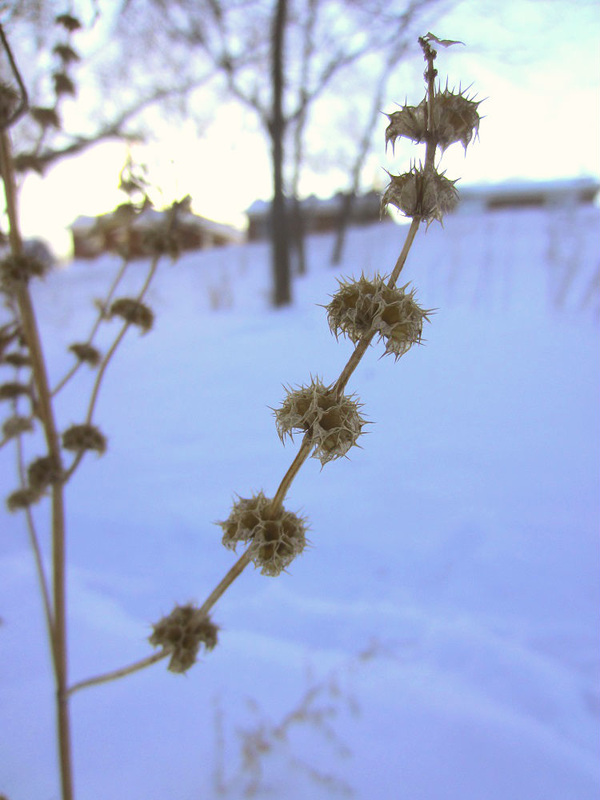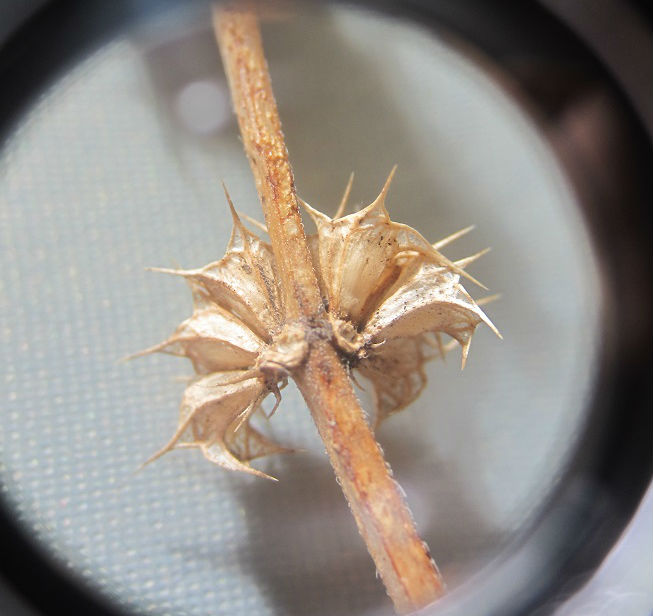Motherwort (Leonurus cardiaca) is an herbaceous, short-lived perennial plant in the Lamiaceae or mint family. It is a fairly robust plant that can grow up to 5 feet tall, making it another good candidate for winter observation. Though most of the leaves will have withered away, the whorled calyxes persist, making this a fun and interesting plant to ID at this time of year. It is also easy to observe, even from a distance, the opposite branching pattern that is typical of the mint family.
This specimen has one pair of shrivelled leaves remaining, allowing us to view the opposite leaf pattern.
Look closely and see that there are two leaves per node on the stalk (as opposed to an alternate leaf pattern, where there is only one leaf per node). Also, notice the stem. It is square-shaped. This is another pattern of the mint family.
In cross section it is easy to observe the four sides of the square stem. The stem of motherwort is hollow.
Now let’s take a look at the calyxes. These are the only structures of the inflorescence, along with the occasional remaining seed, to persist in winter, the corollas (flower petals) having died back long ago.
The calyx is the collective term for the sepals of a flower and it is the outermost part of a flower. The sepals are often, but not always, green, leaf-like structures that enclose a flower when it is in bud. In the mint family the calyx is made up of usually 5 sepals that are united or fused together to form a tube. In motherwort, these structures grow in whorled clusters around the stem, from the leaf axils. In this pic, half of the whorl has been removed to show 5 individual tube-like calyxes.
Looking down into the calyx, through the loupe, it is easy to see the five lobes of the united sepals. In motherwort the lobes taper off into slender, sharp spines. These spines are sharp enough to pierce the skin, so handle with care!
At the base of the calyx is the seed capsule which contains 4 nutlets, 3 of which are pictured here. They are three-sided and somewhat triangular in shape. The seeds are wider at the top and narrower at the base. Notice the fine, bristly hairs, just barely visible on the top of the seeds.
Motherwort is a non-native plant that grows abundantly in disturbed soil, along roadsides, in fields and urban parks. Keep an eye out for its opposite branching and leaf arrangement, square stems and spiky, whorled calyxes.











 RSS Feed
RSS Feed